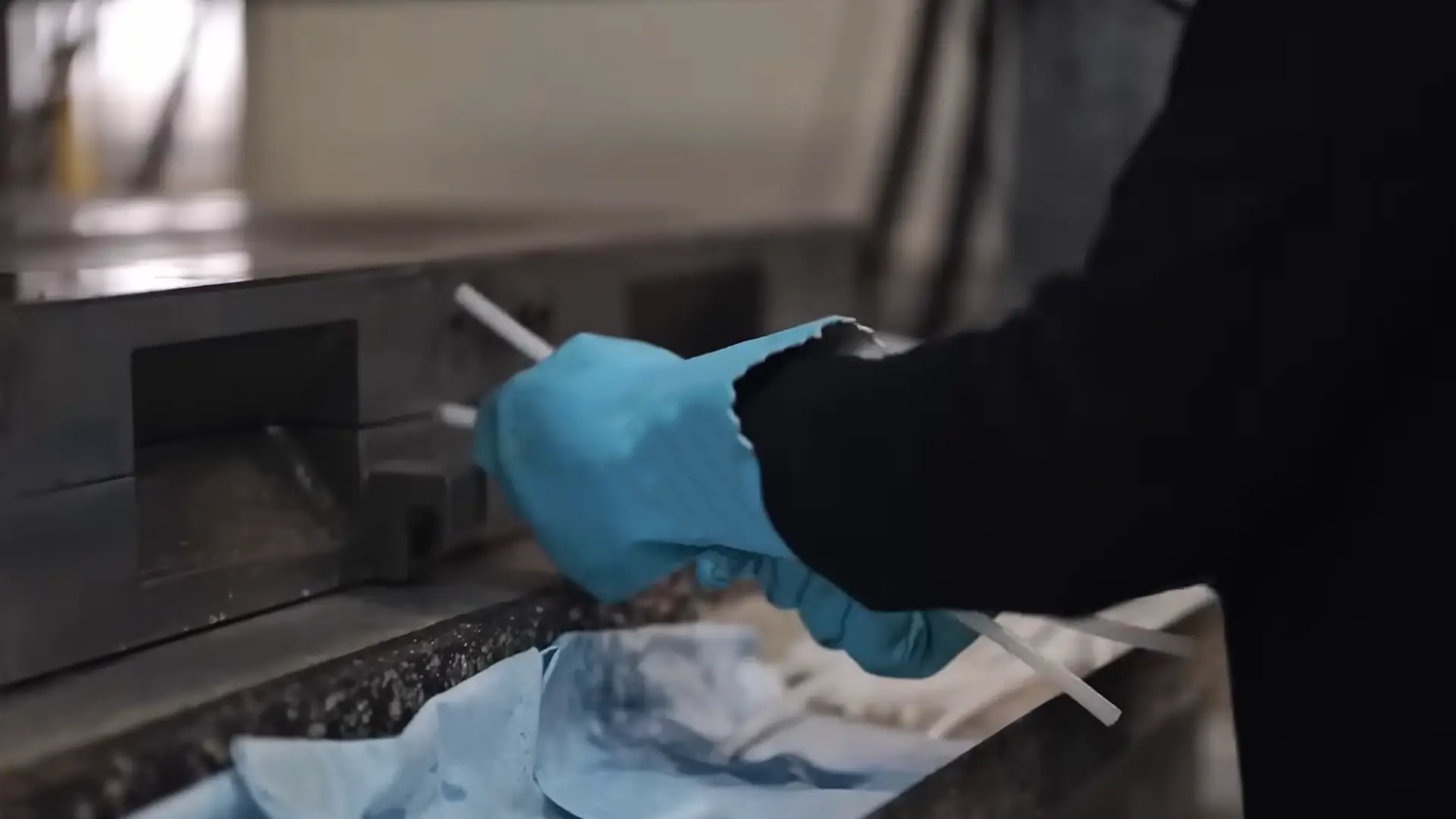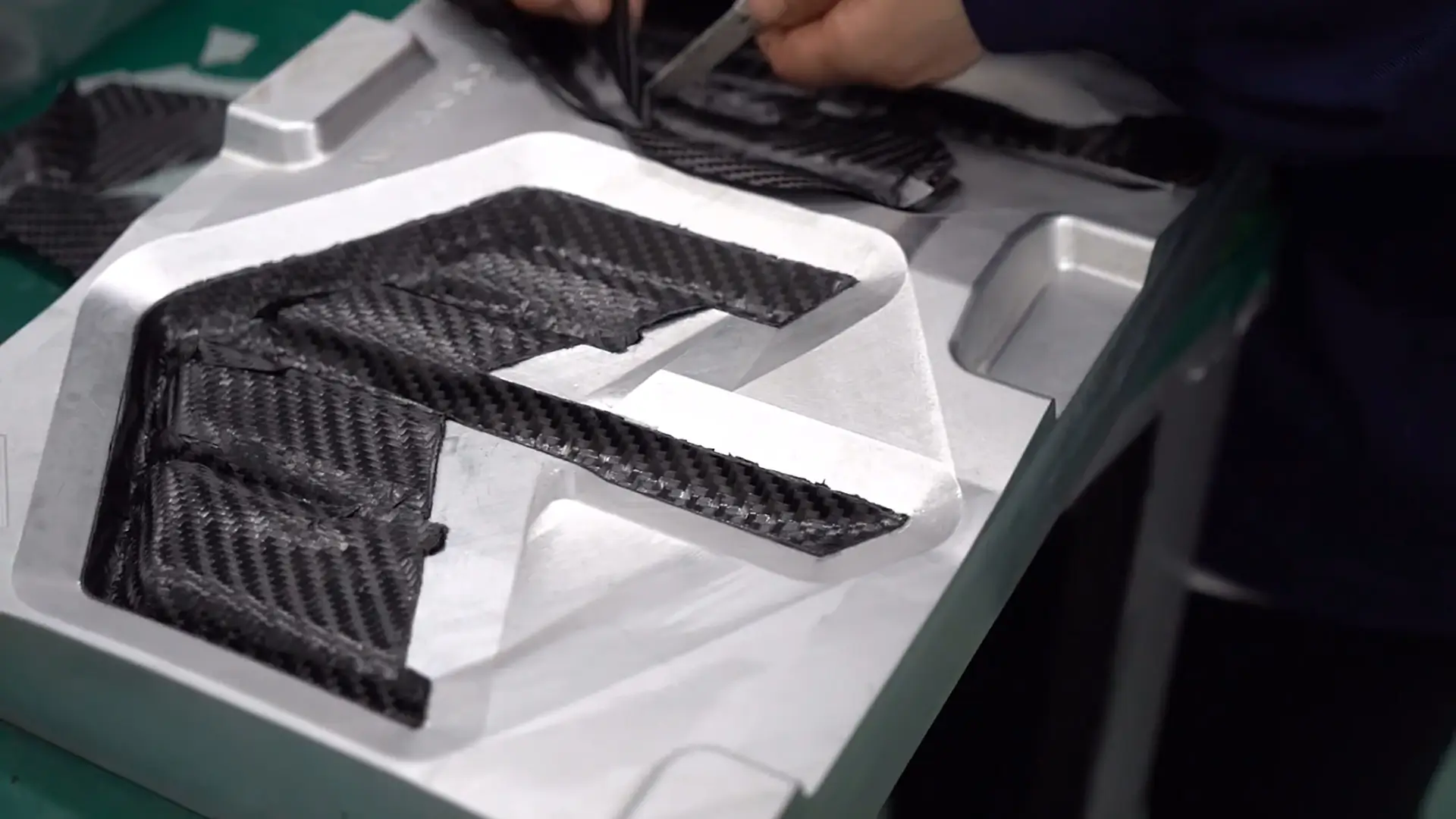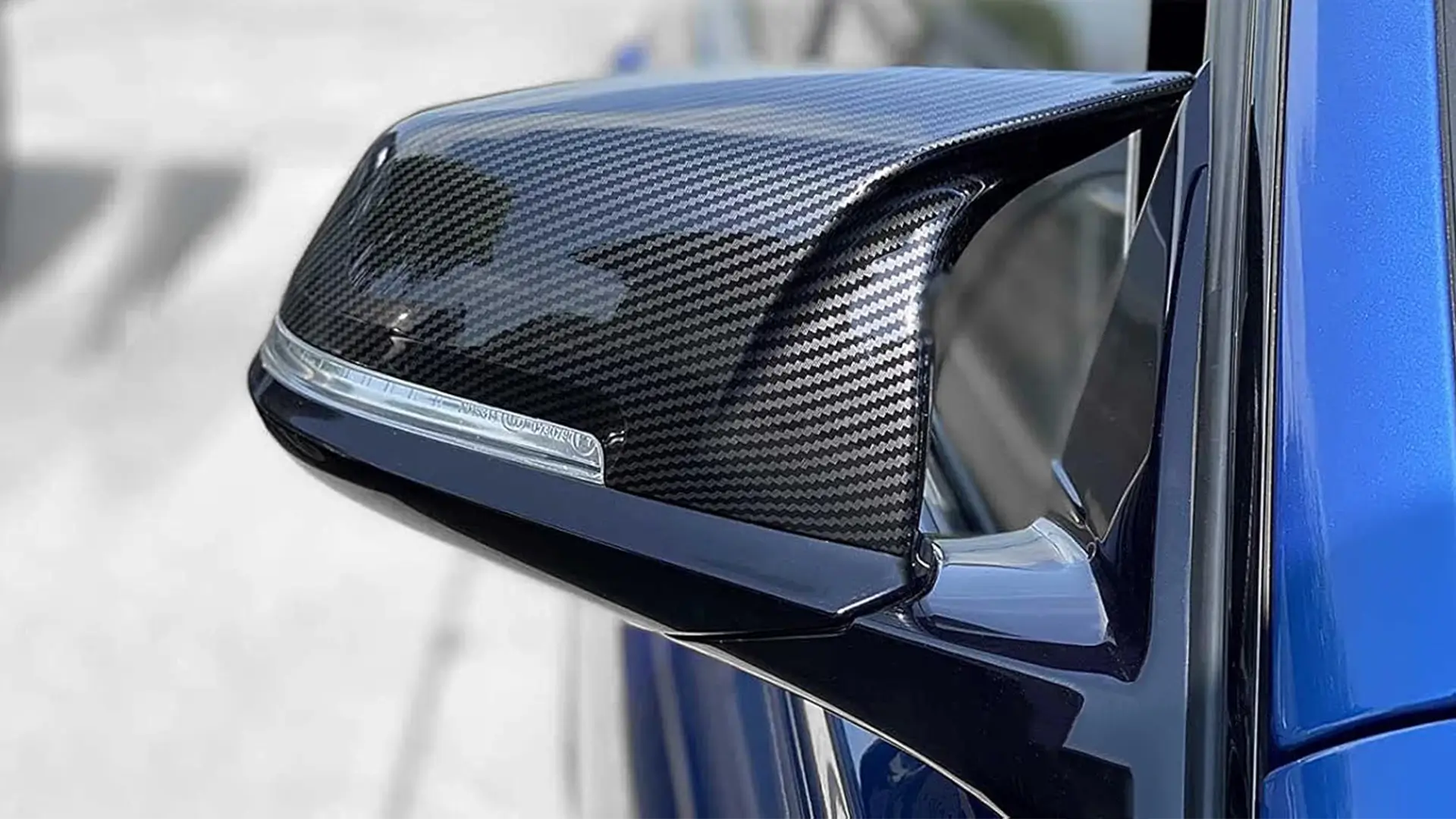Understanding the Carbon Fiber Molding Process RTM
The carbon fiber molding process RTM involves injecting resin into a closed mold containing a dry fiber preform. This technique ensures thorough impregnation of the fibers, resulting in components with excellent mechanical properties and surface finish. The process is highly adaptable, allowing for the production of complex shapes and large-scale parts with consistent quality.
Key Steps in the Resin Transfer Molding Production Line
The carbon fiber molding process RTM involves a sequence of carefully managed stages. Each phase of the production line is essential to achieving the high-performance results expected in industries that rely on composite materials. Understanding each step helps customers optimize efficiency and product quality in their carbon fiber production process.
1. Preform Preparation
The carbon fiber molding RTM process begins with preform preparation. This step sets the foundation for the final component’s shape and strength.
In this stage, dry carbon fiber fabrics—typically in woven, stitched, or braided formats—are carefully cut according to the CAD-based design specifications. The fabrics are then laid up or formed into the desired three-dimensional geometry using tools like forming jigs or soft tooling. In some setups, automated preforming technology is used for higher precision and repeatability.
A correctly shaped and placed preform ensures the structural integrity of the final part and influences how well the resin flows during injection. It also reduces the likelihood of resin-rich or resin-starved areas that can weaken the component.
Table: Common Carbon Fiber Preform Formats
| Format | Description | Application Use Case |
|---|---|---|
| Woven Fabrics | Cross-weaved fiber layers | General-purpose structural parts |
| Stitched Fabrics | Multi-axial layers stitched together | Complex, load-bearing parts |
| Braided Sleeves | Tubular shapes for reinforcement | Tubes, rods, and shafts |

2. Mold Setup
Once the preform is ready, the next step in the carbon fiber molding process RTM is the mold setup.
The mold is typically a two-part, high-strength metal or composite structure that defines the external shape and surface quality of the component. Before placing the preform inside, technicians apply mold release agents to facilitate easy part removal later.
The preform is carefully inserted into the mold cavity, ensuring that it aligns perfectly and maintains its intended geometry. At this stage, resin inlet and vent lines are also configured to allow for smooth resin flow during injection. The mold is then closed and sealed, either mechanically or hydraulically, to prepare for the next step.
Maintaining mold temperature and alignment is critical during this phase to avoid fiber distortion or incomplete impregnation in the final part.
3. Resin Injection
Resin injection is one of the most critical phases in the carbon fiber molding RTM production line.
Here, a low-viscosity thermosetting resin (usually epoxy, vinyl ester, or polyester) is introduced into the sealed mold under controlled pressure. This is typically done using a metering and mixing system that delivers resin at the correct temperature and flow rate.
The resin flows through a network of channels or directly into the preform, filling the entire cavity and thoroughly impregnating the carbon fiber layers. The goal is complete saturation without forming voids or air bubbles.
Proper design of the flow path, injection ports, and venting system ensures uniform resin distribution. This phase must be optimized based on the part’s size, complexity, and fiber orientation.
Table: Resin Injection Parameters
| Parameter | Recommended Range | Purpose |
|---|---|---|
| Resin Viscosity | 100 – 600 mPa·s | Ensures easy flow and wet-out |
| Injection Pressure | 1 – 10 bar | Drives resin through the preform |
| Injection Time | Depends on part complexity (2–30 min) | Affects uniformity and quality |

4. Curing
Once the resin has been fully injected, the next stage in the carbon fiber molding RTM process is curing.
Curing involves applying heat to initiate the chemical cross-linking of the resin molecules, transforming the liquid resin into a rigid, durable matrix. This step is performed with the mold still closed, using integrated heating systems such as oil, electric, or hot water circuits.
The curing cycle depends on the type of resin system used. For example, epoxy systems might cure at 80–120°C over 30 minutes to several hours. A precise temperature ramp and dwell period are crucial for consistent material properties across the part.
In many setups, post-curing is also applied—removing the part from the mold and heating it again in an oven to enhance final mechanical and thermal characteristics.
5. Demolding
The final physical step in the carbon fiber molding process RTM is demolding.
After the resin has fully cured, the mold is opened, and the finished part is carefully removed. Because of the mold release agents applied earlier, this step can be completed without damaging the component’s surface or edges.
Technicians inspect the part for visible defects such as surface porosity, fiber print-through, or dimensional inconsistencies. If required, minor post-processing steps like trimming, drilling, or sanding are conducted to achieve final specifications.
This step marks the completion of the carbon fiber production process, and the part is now ready for functional testing, assembly, or shipment.

Advantages of the Carbon Fiber Molding RTM Process
The carbon fiber molding process RTM offers a range of benefits that make it a preferred choice in advanced composite manufacturing. Customers seeking high-performance parts with excellent repeatability and surface quality will find this process ideal for various applications. Below are the main advantages of using the RTM method in the carbon fiber production process.
High-Quality Surface Finish
One of the most significant benefits of the carbon fiber molding RTM method is the exceptional surface finish it delivers. Because RTM is a closed-mold process, both sides of the component are shaped by the inner mold surfaces. This results in smooth, clean surfaces on both the A-side and B-side of the part, often eliminating the need for secondary surface treatments or painting.
This feature is especially valuable in industries such as automotive and consumer goods, where visual aesthetics are critical. The ability to achieve high gloss, uniform texture, and precise contouring directly from the mold enhances product value and reduces processing time.
Dimensional Accuracy
Dimensional consistency is a crucial requirement in structural components, and the carbon fiber molding process RTM excels in this area. Because the mold is rigid and precisely manufactured, and the injection and curing processes are closely controlled, parts produced via RTM exhibit tight tolerances and repeatable geometry.
This level of accuracy is essential for components that must fit into assemblies without adjustment, such as panels, brackets, or frames. For customers, this translates into reduced post-processing, faster assembly, and fewer quality control issues.
Table: Dimensional Accuracy vs. Tolerance Range
| Process Stage | Control Method | Typical Tolerance |
|---|---|---|
| Mold Fabrication | CNC-machined tool steel | ±0.05 mm |
| Resin Injection | Automated pressure monitoring | ±0.1 mm |
| Final Cured Part | Thermal control and shrinkage prediction | ±0.2 mm |
Material Efficiency
The carbon fiber molding RTM process is designed to maximize material utilization. Unlike some traditional methods where excess resin or fiber can lead to waste, RTM uses precise metering of both resin and reinforcement materials.
During injection, only the necessary volume of resin is used to impregnate the preform. This reduces not only waste but also part weight—an important factor in aerospace, sporting goods, and automotive sectors.
Moreover, RTM enables consistent fiber-to-resin ratios, which leads to better mechanical properties and reduced variability between parts.
Design Flexibility
Another major advantage of the carbon fiber molding RTM technique is its support for complex part designs. The flexibility of preform shaping combined with mold-based production allows for the creation of parts with intricate geometries, integrated stiffeners, hollow sections, and mounting features.
This opens the door for engineers to consolidate multiple parts into a single molded component, reducing the number of joints and fasteners needed. It also helps reduce weight while maintaining or increasing structural strength.
Designers benefit from the ability to include integrated ribs, channels, or attachment points, making RTM highly suitable for both functional and aesthetic requirements.
Applications of the Carbon Fiber Molding RTM Process
| Industry | Application Details |
|---|---|
| Aerospace | Fuselage panels, wing spars, aircraft fairings, interior panels, cargo doors, bulkheads, and structural reinforcements. |
| Automotive | Body panels, battery enclosures (EVs), suspension arms, crossmembers, hoods, roof systems, seat structures, bumpers. |
| Renewable Energy | Wind turbine blades, nacelle housings, hub components, tower access panels, internal stiffeners. |
| Marine | Hulls, decks, rudders, stringers, transoms, hatches, and performance boat parts needing water resistance and rigidity. |
| Industrial Equipment | Robotic arm shells, CNC machine covers, safety shields, electrical tubes, support frames, and custom enclosures. |
| Sports | Bicycle frames, tennis racket heads, hockey sticks, kayak shells, racing helmets, archery bows, and ski parts. |
Professional Comparison of the RTM Process Family
| Process | Full Name | Key Features | Main Application Scenarios | Remarks |
|---|---|---|---|---|
| RTM | Resin Transfer Molding | Rigid molds with medium-low pressure resin injection | High-end automotive parts, aerospace components | Standard RTM, high cost, high precision |
| VARTM | Vacuum Assisted Resin Transfer Molding | Soft or hard mold with vacuum-assisted resin flow | Large ship hulls, wind turbine blades, boat shells | Low equipment cost, suitable for large-scale parts |
| LRTM | Light Resin Transfer Molding | Lightweight dual molds with low-pressure injection | Mid- to low-end auto parts, sanitary ware | Low-cost molds, good surface quality |
| HP-RTM | High Pressure Resin Transfer Molding | High-pressure fast injection + rapid curing | Carbon fiber automotive structural parts (mass production) | Suitable for CF mass production, cycle < 5 min |
| C-RTM | Compression Resin Transfer Molding | Post-injection semi-solid compression molding | High-performance structural or complex-shaped parts | Excellent flow, high compaction |
Frequently Asked Questions
Q1: Is resin transfer molding better than other carbon fiber molding processes?
It depends. For medium to high-volume, complex parts needing a good finish, RTM is ideal. For very fast cycles, compression molding carbon fiber may be better.
Q2: Can RTM be used for prototyping?
Yes, but it’s more efficient for mid-volume production. For quick prototypes, open mold or vacuum infusion may be preferable.
Q3: How strong are carbon fiber parts made with RTM?
Extremely strong. They often exceed aluminum or steel in strength-to-weight ratio.
Q4: What tolerances are achievable with RTM?
Tight tolerances are possible, generally ±0.2 mm depending on mold quality and process control.
Q5: Is carbon fiber molding expensive?
A: While initial tooling can be costly, carbon fiber molding becomes cost-effective for medium to large production volumes due to its repeatability and strength-to-weight advantage.
Q6: How do I choose the right carbon fiber molding process?
A: Consider your volume, structural requirements, budget, and finish expectations. Manufacturers can help recommend the best option.
Final Thoughts
As composite material experts, we are willing to provide you with critical assistance. The correct judgment now avoids cost overruns, delays, and disappointing results later.
Need advice on your custom carbon fiber part? Reach out to our team for expert guidance.




